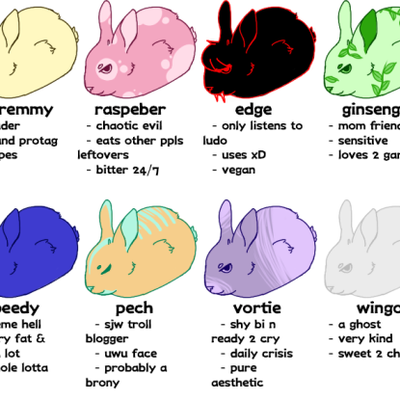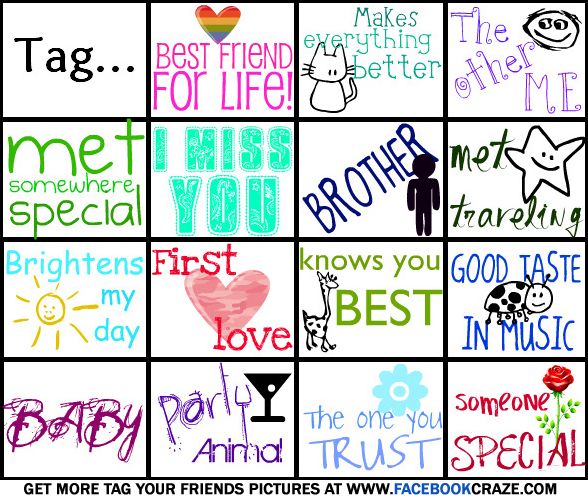
If you’re at all familiar with Facebook or Instagram, you’re familiar with the “tag yourself” meme: a grid of cartoons or photos from which you cast roles for yourself and your friends. And if you’re at all familiar with Tumblr, you’re familiar with its total straight-faced incomprehensibility to outsiders. The rabbits above — from “edge,” who “only listens to ludo,” to “wingo,” the “ghost” who is “sweet 2 children” — are what happens when the two collide.
In a way, it’s almost surprising that it took the “tag yourself” meme this long to turn meta. When Facebook introduced photo tagging, it almost immediately set off a wave of memes in which you allied each of your friends with bland friend traits and pop-culture characters. Which social archetype are you? Which Pokémon are you? And so on and so forth. Those types of images have mostly fallen by the wayside of Facebook, but very suddenly and very quickly, they are back on Tumblr.

Yet here we are, in 2016, and the “tag yourself” meme has gone bonkers on Tumblr. This is an unexpected development mainly because Tumblr doesn’t support photo tagging. “Tag yourself” in this instance isn’t actually about defining your online identity. Rather, it’s a referendum on Tumblr culture itself — the way users speak and interact, and the way memes on the service progress almost instantly to their post-ironic phase.
Take these examples:
How much of this do you understand? It’s almost impenetrable unless you spend a lot of tin in the Dashboard. I could explain to you what “meme trash” and “aesthetic” mean in these contexts (“obsessed with memes” and “obsessed with an imagined early-’90s computer aesthetic,” respectively), but that’s almost beside the point. These images are oddly compelling because they’re self-deprecating collections of Tumblr stereotypes and running jokes that work in aggregate; the sheer magnitude is the thrust.
Isolated into segments, each of these options doesn’t make a ton of sense, but the image works on a holistic level, throwing so many niche references and so much nonsense out at once that it manages to convey the broad weirdness of a subculture. Users can tag themselves as one of the options, but that’s not really the point in my interpretation. When it comes to ironic self-loathing online, no service can hold a candle to Tumblr, which has cornered the market on oddball teens commiserating with like-minded individuals. The point is to convey, “Look how insane we all are.”
In many ways, it’s the kitchen-sink approach to memes, which usually prioritize relatability and the clear conveyance of a single emotion. What these “tag yourself” images do is throw as many references and emotions as they can at a viewer and then let them see what they want to see.





























